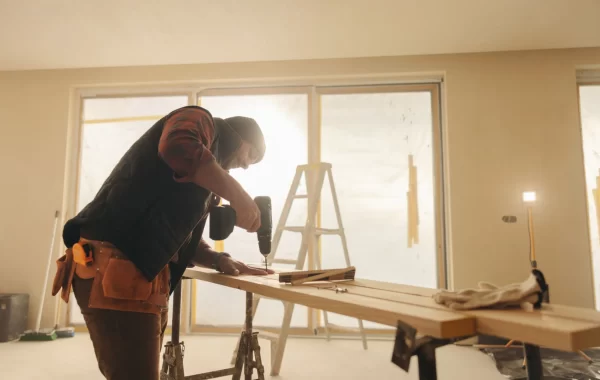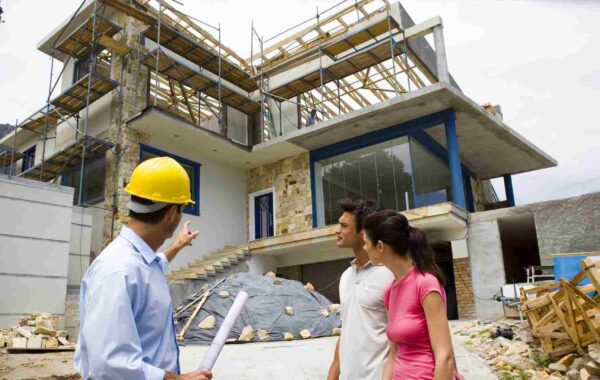
The Future of Architecture and Construction: Sustainable and Smart Building Trends
The Future of Architecture and Construction: Innovations in Smart & Sustainable Building
Explore the future of architecture and construction with smart technology, sustainable designs, and innovative building solutions shaping tomorrow.
The architecture and construction industries experience an extensive revolutionary shift. Urban expansion and environmental urgencies drive the industry toward developing efficient and sustainable solutions.
Future construction relies on advanced technologies, including AI design algorithms and sustainable materials, in combination with prefabricated methods, to create new ways of building and establish sustainable initiatives for a better climate future.
The future of building development surpasses mere architectural beauty to focus on sustainable efficiency and resilient construction. This blog will walk you through the current smart building trends which will shape the future direction of architecture and construction development.
Top Architecture and Construction Trends of 2025
The upcoming era of architecture and construction will establish unprecedented levels of intelligence and sustainability backed by groundbreaking innovation. The path to 2025 will be shaped by emerging technologies and sustainable practices, which transform the building sector. Following are the key trends listed below:
1. Sustainable Architecture: Building for a Greener Future
Sustainability stands as an essential requirement and not a simple marketing term anymore. The construction industry emits approximately 40% of global carbon emissions while ranking as one of the largest sources of environmental pollutants.
The rise of sustainable construction methods leads architects and builders to use practices which protect both our environment as well as delivering maximum efficiency and resilience.
Net-Zero Energy Buildings
These structures use their renewable power sources, including solar panels, wind turbines, and geothermal systems, to create energy at equal levels as their consumption rate. The advancement of smart grid technology coupled with better energy storage capabilities provides more opportunities for net-zero building implementation.
Biophilic Design
The design approach utilizes natural features like green walls together with indoor gardens and natural lighting sources. Through biophilic design people experience both reduced energy needs and heightened wellness benefits.
Circular Construction
The circular construction framework stands in contrast to the classic linear “take, make, dispose” model through its methods of material reuse alongside waste recycling, along with designs that support disassembly. The practice extends the useful life of building materials while minimizing waste generation.
Passive Design Strategies
By improving building orientation, insulation, and ventilation, passive design decreases the need for artificial heating and cooling. This reduces energy consumption and operating costs.
Green Certifications: Standards like LEED (Leadership in Energy and Environmental Design) and BREEAM (Building Research Establishment Environmental Assessment Method) are becoming benchmarks for sustainable construction, encouraging builders to adopt eco-friendly practices.
2. Smart Buildings: The Rise of Intelligent Architecture
Our relationships with our environments transform through the implementation of smart buildings. Using Internet of Things (IoT) technology and artificial intelligence (AI) and big data analysis has transformed building structures into more effective and user-friendly smart systems.
IoT-Enabled Systems
Real-time monitoring of lights, temperatures, and indoor air quality and security control is enabled by smart sensors and connected devices. Both energy efficiency and occupant comfort experience increased levels of improvement.
AI-Driven Building Management
AI algorithms process multiple system data to enhance energy utilization patterns while predicting maintenance requirements and tailoring services to individual users’ preferences. Smart thermostats use occupancy data to learn individual patterns which allows them to adjust temperature settings automatically.
Smart Grid Integration: Architecture and Construction
Smart grids implement two-way communication systems which link buildings to utility services. Such systems can establish time-dependent energy prices to achieve better renewable energy integration and distribute power loads across networks.
Occupant-Centric Design
Smart buildings use priority-driven approaches to fulfill their user needs while meeting their specific preferences. Smart buildings increase user-friendliness and adaptability through functionalities like voice-activated controls, mobile app integration and personalized lighting features.
Predictive Maintenance: Architecture and Construction
Smart sensors from IoT technology enable the detection of equipment problems before failures take place, which reduces both system breakdowns and maintenance expenses. The implementation of proactive measures enhances both system longevity and operational effectiveness inside buildings.
3. Modular and Prefabricated Construction: Efficiency Meets Innovation
Modular and prefabricated construction methods have become popular because they deliver speedy construction solutions along with affordable costs and environmentally friendly features.
The construction process under these methods requires off-site component assembly followed by transportation to the building site for finishing work.
Reduced Construction Time
Project timelines become much shorter because prefabrication makes it possible to work on site preparation while teams build modules simultaneously.
Minimized Waste
The use of factory-controlled settings enables exact material consumption which minimizes waste while improving quality control standards.
Scalability and Flexibility
One of the great advantages of modular construction is its ability to fit buildings of all sizes, including residences and multi-story buildings. The system provides smooth possibilities to extend or transform interior arrangements with ease.
Sustainability
Off-site construction reduces on-site disruption and emissions, while the use of recycled and eco-friendly materials further enhances sustainability.
4. Resilient Design: Preparing for a Changing Climate
Architects together with builders now devote their efforts to developing resilient design methods which protect structures from severe weather occurrences as well as rising ocean levels during rising environmental threats.
Flood-Resistant Structures
New construction features elevated foundations and waterproof materials for buildings while incorporating flood barriers as protective elements against water damage.
Fire-Resistant Materials
Builders construct properties in wildfire areas using non-burning materials that incorporate defensible space design concepts.
Earthquake-Resistant Engineering
Structures located in earthquake-prone areas benefit from seismic-resistant engineering through implementations of base isolation and damping systems, which increase stability performance.
Adaptive Reuse
Architects now restore older buildings by converting them into modern developments. The reuse of old buildings with new purposes safeguards cultural heritage and minimizes waste production.
5. 3D Printing and Robotics: The Next Frontier in Construction
3D printing together with robotics stands ready to transform construction through automated complex structure production and customized design capacity.
3D-Printed Buildings
Entire buildings can be manufactured by big 3D printers through a layer-by-layer construction process that employs concrete, clay, and recycled plastics as materials. The construction process becomes quicker and more cost-efficient due to reduced waste output and lowered labor requirements.
Robotic Construction
Large construction jobs now use robotic technology for tasks including bricklaying, along with welding and building demolition. The deployment of robotic systems on construction sites results in higher precision while ensuring safety measures and better efficiency rates.
Customization
3D printing technology enables the production of advanced customized products beyond the limits of conventional building techniques.
6. Urbanization and Mixed-Use Developments: Building Smarter Cities
Urban populations continue to rise, which leads cities to become more congested and intricate. The combination of residential buildings and commercial areas and recreational facilities in mixed-use development projects solves land utilization challenges by establishing pedestrian-friendly communities.
Vertical Cities
Urban towers now function as closed ecological systems, including living spaces, functional offices, commercial retail units, and greenery.
Transit-Oriented Development
Development teams design new structures to suit transportation nodes to enable public transportation use and lower car dependency for more sustainable transportation systems.
Smart Cities
Smart technologies enable urban centers to improve their infrastructure and transportation systems as well as public service delivery. Smart buildings serve as fundamental units which hold essential value within interconnected ecosystems.
7. Human-Centric Design: Prioritizing Health and Well-Being
The worldwide COVID-19 crisis exposed the essential need for buildings that prioritize human health and well-being. The emphasis of modern architectural design focuses on developing spaces which strengthen physical health alongside mental health and emotional satisfaction.
Indoor Air Quality
Architects incorporate advanced ventilation systems together with air purification technologies to deliver clean, healthy air.
Natural Light and Views
Architects are now making natural daylight and outdoor visibility essential areas of focus because these elements improve mood and workplace efficiency.
Acoustic Comfort
The usage of soundproofing materials with noise-dampening qualities helps designers establish quiet and peaceful spaces.
Flexible Spaces:
Building designs that can transform space usage according to changing requirements remain key to accommodating different needs and preferences.
Wrapping Up
Architectural and construction developments move forward through environmentally-conscious practices and technologically advanced solutions and creative planning methods. Thus, if you intend to construct your house, now is the right moment to work with a construction professional who follows modern architectural practices.
Your decision to work with a contractor who focuses on sustainability along with intelligent technology integration and innovative design practices guarantees that your home combines efficiency with future-readiness.




